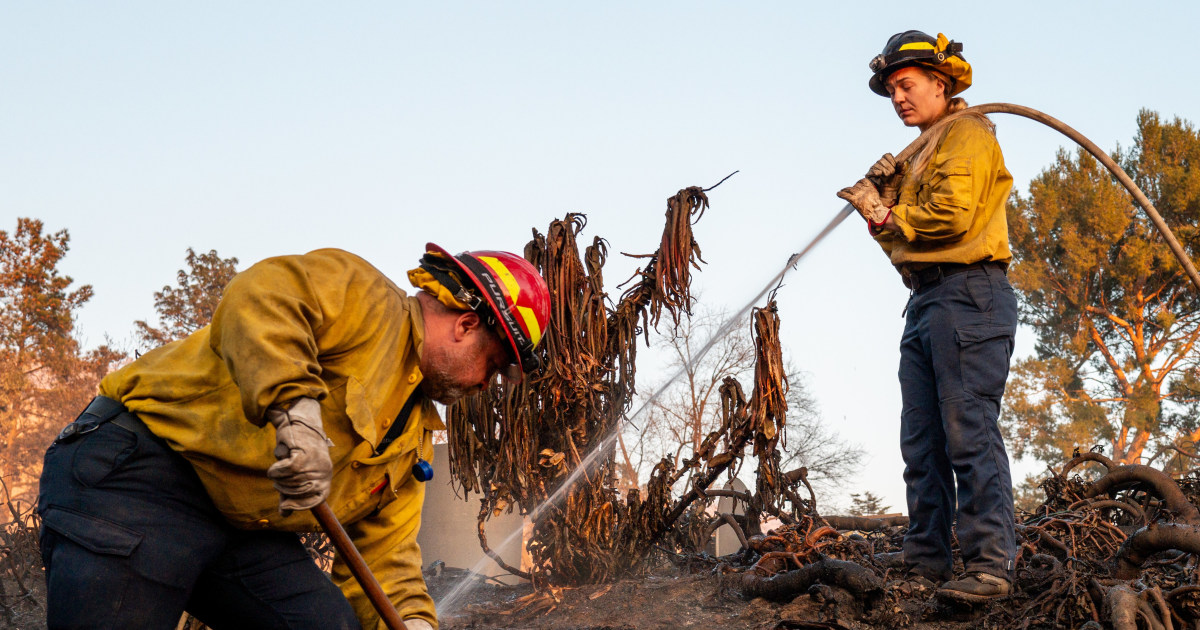Los Angeles Faces Renewed Danger: Understanding the Latest Fire Risk Alerts
As Southern California braces for another week of extreme fire risk, the renewed fire danger in Los Angeles has residents and officials alike on high alert. With red flag warnings issued across the region, understanding the factors contributing to this heightened threat is crucial for community safety and preparedness.
What Are Red Flag Warnings?
Red flag warnings are issued by the National Weather Service when conditions are conducive to the rapid spread of wildfires. These conditions may include:
- Strong Winds: High winds can carry embers far from the original fire source, igniting new areas.
- Low Humidity: Dry air can sap moisture from vegetation, making it more flammable.
- High Temperatures: Elevated temperatures can contribute to the drying of fuels, increasing fire risk.
In Los Angeles, these conditions are exacerbated by the unique geography of the area, characterized by steep hills and canyons, which can funnel winds and create dangerous fire behavior.
Factors Contributing to Increased Fire Risk
The current fire risk alerts in Los Angeles are not just due to the typical seasonal patterns. Several other factors contribute to this alarming situation:
- Climate Change: Prolonged drought conditions and rising temperatures due to climate change have made the region more susceptible to wildfires.
- Vegetation Overgrowth: In some areas, vegetation has flourished due to previous wet seasons, creating a larger fuel base for potential fires.
- Human Activity: Many wildfires are sparked by human activities, whether through negligence or accidents. As the population grows, so does the likelihood of human-caused fires.
Understanding these factors helps residents recognize the importance of fire preparedness and community response during these critical periods.
The Role of Local Officials and Agencies
Local officials and agencies play a vital role in managing fire risks and ensuring community safety. In response to the recent alerts, they have implemented several proactive measures:
- Public Awareness Campaigns: Educating residents about fire safety, evacuation routes, and emergency preparedness kits is crucial.
- Vegetation Management: Efforts to clear brush and create defensible spaces around homes are ongoing to reduce fire fuel.
- Emergency Services Preparedness: Fire departments are on high alert, ready to respond quickly to any fire outbreaks. Resources are allocated strategically to high-risk areas.
These initiatives aim to mitigate the impact of wildfires and protect the community effectively.
Community Preparedness: What Can Residents Do?
While local agencies are working diligently to combat fire risks, residents also have a crucial role to play in ensuring their safety. Here are some steps community members can take:
- Create a Fire-Ready Home: Clear flammable materials from around the house, maintain a defensible space, and use fire-resistant building materials.
- Stay Informed: Keep abreast of fire alerts by signing up for local emergency notifications and following local news outlets.
- Prepare an Emergency Kit: Assemble a kit that includes essential items such as water, food, medications, and important documents.
- Have an Evacuation Plan: Know multiple routes out of your neighborhood and have a plan for pets and livestock.
Being proactive can make a significant difference in ensuring personal safety and the safety of others in the community.
The Importance of Community Resilience
Resilience is key to facing the challenges posed by wildfires in Los Angeles. Communities that work together to prepare for and respond to fire risks tend to fare better during emergencies. Building resilience involves:
- Fostering Community Networks: Neighbors can create support systems to help each other prepare and respond to fire risks.
- Participating in Local Programs: Engaging in community-led fire mitigation programs can enhance collective preparedness.
- Advocating for Resources: Residents should advocate for local government resources to support fire prevention efforts, such as increased funding for fire services and vegetation management.
By cultivating community resilience, Los Angeles can better withstand the threat of wildfires and protect its residents.
Looking Ahead: The Future of Fire Risk Management
As climate change continues to reshape the landscape of fire risk in Los Angeles and beyond, it’s essential to adapt our strategies for fire management. This includes:
- Investing in Technology: Utilizing drones, satellite imagery, and advanced modeling can help predict fire behavior and improve response times.
- Researching Climate Resiliency: Understanding the long-term effects of climate change on fire patterns can help in planning and resource allocation.
- Building Sustainable Landscapes: Incorporating fire-resistant landscaping and vegetation can create a buffer against wildfires.
By embracing innovation and sustainability, Los Angeles can develop more effective fire risk management practices that protect both the environment and its residents.
Conclusion
As Los Angeles faces renewed danger from wildfires, understanding the latest fire risk alerts is vital for community safety. With proactive measures from local officials and active participation from residents, the city can navigate these challenges effectively. By fostering resilience, staying informed, and preparing adequately, the people of Los Angeles can work together to mitigate the risks associated with wildfires and protect their vibrant community.
See more Your Daily Weather



